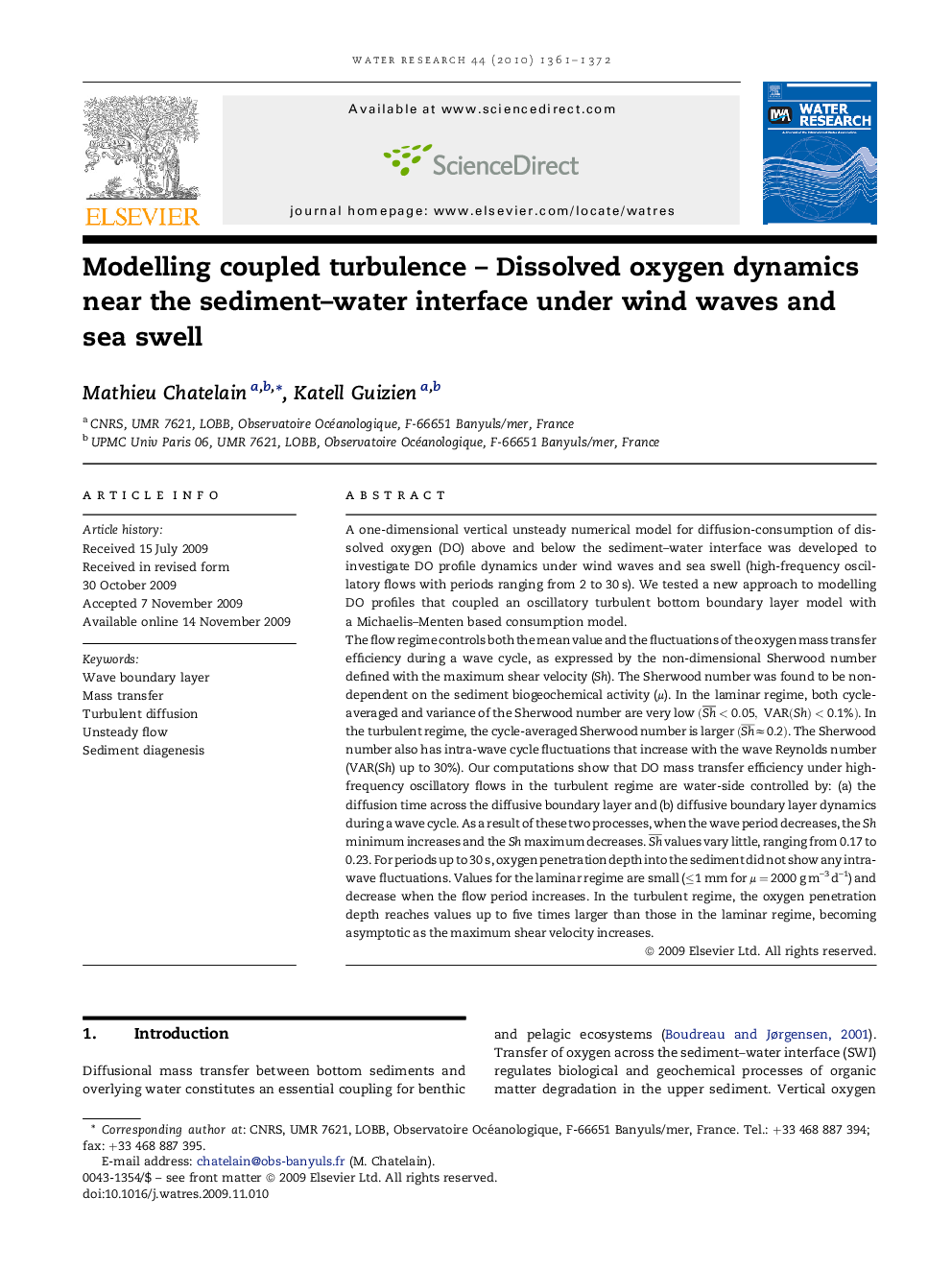| کد مقاله | کد نشریه | سال انتشار | مقاله انگلیسی | نسخه تمام متن |
|---|---|---|---|---|
| 4484273 | 1316915 | 2010 | 12 صفحه PDF | دانلود رایگان |

A one-dimensional vertical unsteady numerical model for diffusion-consumption of dissolved oxygen (DO) above and below the sediment–water interface was developed to investigate DO profile dynamics under wind waves and sea swell (high-frequency oscillatory flows with periods ranging from 2 to 30 s). We tested a new approach to modelling DO profiles that coupled an oscillatory turbulent bottom boundary layer model with a Michaelis–Menten based consumption model.The flow regime controls both the mean value and the fluctuations of the oxygen mass transfer efficiency during a wave cycle, as expressed by the non-dimensional Sherwood number defined with the maximum shear velocity (Sh). The Sherwood number was found to be non-dependent on the sediment biogeochemical activity (μ ). In the laminar regime, both cycle-averaged and variance of the Sherwood number are very low (Sh¯<0.05, VAR(Sh)<0.1%). In the turbulent regime, the cycle-averaged Sherwood number is larger (Sh¯≈0.2). The Sherwood number also has intra-wave cycle fluctuations that increase with the wave Reynolds number (VAR(Sh) up to 30%). Our computations show that DO mass transfer efficiency under high-frequency oscillatory flows in the turbulent regime are water-side controlled by: (a) the diffusion time across the diffusive boundary layer and (b) diffusive boundary layer dynamics during a wave cycle. As a result of these two processes, when the wave period decreases, the Sh minimum increases and the Sh maximum decreases. Sh¯ values vary little, ranging from 0.17 to 0.23. For periods up to 30 s, oxygen penetration depth into the sediment did not show any intra-wave fluctuations. Values for the laminar regime are small (≤1 mm for μ = 2000 g m−3 d−1) and decrease when the flow period increases. In the turbulent regime, the oxygen penetration depth reaches values up to five times larger than those in the laminar regime, becoming asymptotic as the maximum shear velocity increases.
Journal: Water Research - Volume 44, Issue 5, March 2010, Pages 1361–1372